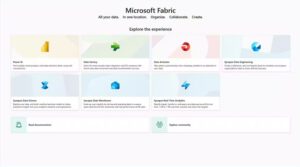About This Course
This five-day course describes how to use Configuration Manager and its associated site systems to efficiently manage network resources. In this five-day course, you will learn day-to-day management tasks, including how to manage applications, client health, hardware and software inventory, operating system deployment, and software updates by using Configuration Manager. You also will learn how to optimize Endpoint Protection, manage compliance, and create management queries and reports.
Although this course and the associated labs are written for Microsoft Endpoint Configuration Manager and Windows 11, the skills taught will also be backwards compatible with previous editions of System Center Configuration Manager and Windows 10.
Audience Profile
This course is for experienced information technology (IT) professionals, typically described as Enterprise Desktop Administrators (EDAs). These EDAs deploy, manage, and maintain PCs, devices, and applications across medium, large, and enterprise organizations. A significant portion of this audience uses, or intends to use, the latest release of Configuration Manager to manage and deploy PCs, devices, and applications.
Course Details
Module 1: Managing computers and mobile devices in the enterprise
This module describes the features of Configuration Manager that you can use to perform complex management tasks, including the following tasks; Hardware and software inventory, Application management, Operating system deployment, Settings management, Software update management, Remote client troubleshooting, and Protection from malware.
Microsoft Endpoint Configuration Manager (Configuration Manager) provides various features that can help you manage devices and users both on-premises and in the cloud. Organizations that use Configuration Manager find that they can provide more effective IT services in relation to software deployment, settings management, and asset management.
This module introduces you to the primary features, architecture, and management tools used with Configuration Manager. This module also provides a foundation that relates to all other features and management tasks discussed in the modules that follow this one.
Lessons
- Overview of systems management by using enterprise management solutions
- Overview of the Configuration Manager architecture
- Overview of the Configuration Manager administrative tools
- Tools for monitoring and troubleshooting a Configuration Manager site
Module 2: Analyzing data using queries, reports, and CMPivot
The Microsoft Endpoint Configuration Manager database stores a large amount of data about the resources in your environment. You might not always want to perform all management tasks on all resources simultaneously. Therefore, to help you locate devices or user objects in your environment that meet specific criteria, you can create queries. You then can use these queries to create collections or to find additional information about specific resources. This module describes queries and methods of creating and running them.
In addition to queries, you can run reports to view various types of information related to your Configuration Manager environment. To run Configuration Manager reports, you must install and configure a reporting services point, which this module details.
This module also covers CMPivot, which allows you to collect and view real-time data on all the connected devices in your environment. It will enable you to make real-time decisions.
Lessons
- Introduction to queries
- Configuring SQL Server Reporting Services
- Analyzing the real-time state of a device by using CMPivot
- Creating data queries
- Creating subselect queries
- Configuring a reporting services point
- Using CMPivot to Analyze the current state of devices
Module 3: Preparing the Configuration Manager management infrastructure
You can manage computer and user resources within a Microsoft Endpoint Configuration Manager (Configuration Manager) environment only when Configuration Manager has discovered these resources and assigned them to a site.
In this module, you will learn about boundaries and boundary groups that help create logical network locations containing computer devices that you need to manage in your Configuration Manager infrastructure. You can use these boundary configurations for automatic site assignment and to help clients find content and services from associated site systems. You will also learn about the discovery processes that you can use to identify computers, users, and the network infrastructure within your network environment.
You will then learn about collections that support logical groupings of resources. You use these groupings for management tasks, such as targeting software updates, managing application deployments, or deploying compliance settings to resources.
Lessons
- Configuring site boundaries and boundary groups
- Configuring resource discovery
- Organizing resources using device and user collections
- Configuring boundaries, boundary groups, and fallback relationships
- Configuring Active Directory discovery methods
- Creating a device collection
- Creating a user collection
- Configuring a maintenance window
Module 4: Deploying and managing the Configuration Manager client
You can install the Microsoft Endpoint Configuration Manager (Configuration Manager) client software on windows-based devices such as servers, workstations, and laptops. You then can manage these devices and perform operations such as reporting hardware and software inventory information, installing and updating software, and configuring settings required for compliance.
Configuration Manager provides several options for installing the client software. This module explains the supported operating systems and devices, software requirements, and different methods for installing the client software. This module also describes some of the default and custom client settings that you can configure. After installing the client software, you can configure client settings and control how the various client components interact between the managed device and the Configuration Manager environment.
Lessons
- Overview of the Configuration Manager client
- Deploying the Configuration Manager client
- Configuring and monitoring client status
- Managing client settings and performing management operations
- Preparing the site for client installation
- Deploying the Configuration Manager client software by using client push installation
- Configuring and monitoring client health status
- Configuring client settings
- Performing management operations
Module 5: Managing inventory for PCs and applications
This module provides an overview of inventory collection, and explains how you can manage the information collected. You also will learn about the process of collecting hardware and software inventory, initiating inventory cycles, and initiating and securing inventory collection. This module also covers the use of software metering to monitor program usage, and the configuration and management of Asset Intelligence.
Lessons
- Overview of inventory collection
- Configuring hardware and software inventory
- Managing inventory collection
- Configuring software metering
- Configuring and managing Asset Intelligence
- Configuring and managing hardware inventory
- Configuring software metering
- Preparing the site for Asset Intelligence
- Configuring Asset Intelligence
- Monitoring license agreements by using Asset Intelligence
- Viewing Asset Intelligence reports
Module 6: Distributing and managing content used for deployments
Microsoft Endpoint Configuration Manager (Configuration Manager) clients obtain content, such as packages, applications, software updates, and even operating system images, from a content infrastructure made up of distribution points and peer cache sources. In this module, you will review the content distribution and management features, configure distribution points, and learn how to distribute and monitor content. You also will perform content validation and content prestaging.
Lessons
- Preparing the infrastructure for content management
- Distributing and managing content on distribution points
- Installing a new distribution point
- Managing content distribution
Module 7: Deploying and managing applications
In this module, you will learn about the methods for creating, deploying, and managing applications with Configuration Manager. You also will learn to use the Software Center and the Application Catalog to install available applications. You will learn about managing deployments on unconventional applications. In addition, you will learn to install Windows 11 apps and virtualized applications.
Lessons
- Overview of application management
- Creating applications
- Deploying applications
- Managing applications
- Deploying virtual applications by using Microsoft Endpoint Configuration Manager (Optional)
- Deploying and managing Windows Store apps
- Creating applications with requirements
- Deploying applications
- Managing application supersedence
- Uninstalling the Excel Viewer application
- Deploying virtual applications
- Configuring support for sideloading Windows Store apps
- Configuring a Windows Store app
- Deploying Windows 10 apps to users
Module 8: Maintaining software updates for managed PCs
This module explains how to use the software updates feature in Configuration Manager to implement an end-to-end management process for the complex task of identifying, deploying, and monitoring Microsoft and third-party software updates to your Configuration Manager clients.
Lessons
- The software updates process
- Preparing a Configuration Manager site for software updates
- Managing software updates
- Configuring automatic deployment rules
- Monitoring and troubleshooting software updates
- Enabling third-party updates
- Configuring and synchronizing the software update point
- Determining software update compliance
- Deploying software updates to clients
- Configuring automatic deployment rules
Module 9: Implementing Endpoint Protection for managed PCs
This module explains how to use the security-related features provided by Configuration Manager to help protect client computers from malware threats, and to configure specific Windows Defender Firewall settings for clients. Microsoft Defender for Endpoint Protection in Configuration Manager supports the deployment, management, and monitoring of antimalware policies, Windows Defender Firewall settings, Windows Defender Application Guard policies, Windows Defender Exploit Guard policies, and Windows Defender Application Control policies on client computers.
Lessons
- Overview of Microsoft Defender for Endpoint Protection in Configuration Manager
- Configuring, deploying, and monitoring Endpoint Protection policies
- Configuring and deploying advanced threat policies
- Configuring the Microsoft Defender for Endpoint Protection point and client settings
- Configuring and deploying Endpoint Protection policies
- Monitoring Endpoint Protection
- Creating and deploying advanced threat protection policies
Module 10: Managing compliance and secure data access
Many enterprise organizations require systems, such as servers, laptops, desktop computers, and mobile devices, to meet specific configuration and compliance requirements. Compliance settings in Configuration Manager can play a key role in identifying existing configurations, discovering systems that have adverse configuration changes, and remediating these settings automatically when necessary.
Compliance settings also can help control how users manage and access data in the enterprise network environment. For computers that run Windows 8 and newer operating systems, you can manage data using folder redirection, offline files, and roaming profiles. You also can control access to data using remote connection profiles, virtual private network (VPN) profiles, Wi-Fi profiles, and certificate profiles.
This module describes the compliance settings that you can manage using Configuration Manager. You will learn to use these settings to maintain configuration requirements and to provide secure data access to enterprise resources.
Lessons
- Overview of Compliance Settings
- Configuring compliance settings
- Viewing compliance results
- Managing resource and data access
- Managing configuration items and baselines
- Viewing compliance settings and reports
- Configuring remediation in compliance settings
- Using compliance information to create collections
Module 11: Managing operating system deployment
This module explains how to use the operating system deployment feature in Configuration Manager to create operating system images that you can deploy to unmanaged computers and those managed by Configuration Manager. There are several scenarios in which you can deploy operating systems by using Configuration Manager, including when you are working with new systems or when you are upgrading existing ones. Operating system deployment uses both Configuration Manager and Windows components to manage and deliver operating system images. You can configure settings on a reference computer prior to capturing an image of its operating system or by using task sequences that Configuration Manager creates after you deploy the image to a target system.
This module also explains how to use Configuration Manager to create a strategy for operating-system deployments. And also, it explains how to manage Windows as a service.
This module explains how to manage Windows as a service.
Lessons
- An overview of operating system deployment
- Preparing a site for operating system deployment
- Deploying an operating system
- Managing Windows as a service
- Managing the site system roles used to support operating system deployment
- Managing packages to support operating system deployment
- Preparing the operating system image
- Creating a task sequence to deploy an image
- Deploying an image
Module 12: Managing and maintaining a Configuration Manager site
This module describes role-based administration, Remote Tools, and the site maintenance tasks that you can manage by using Configuration Manager. This module also describes how to back up and recover a Configuration Manager site system and use the recommendation(s) from Management Insights to simplify administration.
Lessons
- Configuring role-based administration
- Configuring Remote Tools
- Overview of Configuration Manager site maintenance and Management Insights
- Backing up and recovering a Configuration Manager site
- Updating the Configuration Manager infrastructure
- Configuring a new scope for Toronto administrators
- Configuring a new administrative user
- Configuring the Remote Tools client settings and permissions
- Managing desktops by using Remote Control













